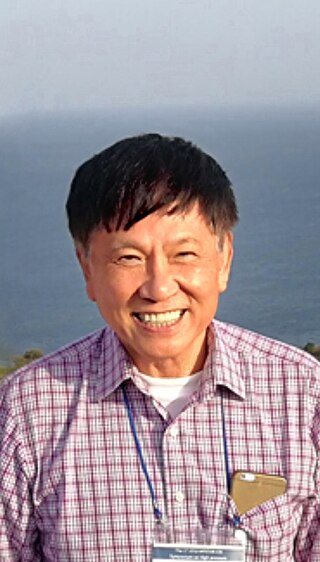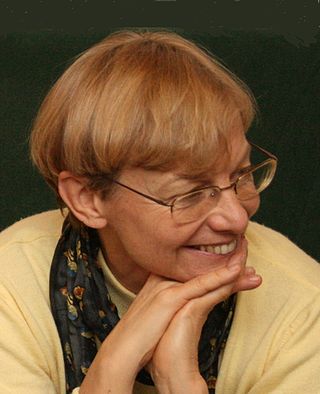Related Research Articles

Inge Lehmann was a Danish seismologist and geophysicist. In 1936, she discovered that the Earth has a solid inner core inside a molten outer core. Before that, seismologists believed Earth's core to be a single molten sphere, being unable, however, to explain careful measurements of seismic waves from earthquakes, which were inconsistent with this idea. Lehmann analysed the seismic wave measurements and concluded that Earth must have a solid inner core and a molten outer core to produce seismic waves that matched the measurements. Other seismologists tested and then accepted Lehmann's explanation. Lehmann was also one of the longest-lived scientists, having lived for over 104 years.

The American Geophysical Union (AGU) is a 501(c)(3) nonprofit organization of Earth, atmospheric, ocean, hydrologic, space, and planetary scientists and enthusiasts that according to their website includes 130,000 people. AGU's activities are focused on the organization and dissemination of scientific information in the interdisciplinary and international fields within the Earth and space sciences. The geophysical sciences involve four fundamental areas: atmospheric and ocean sciences; solid-Earth sciences; hydrologic sciences; and space sciences. The organization's headquarters is located on Florida Avenue in Washington, D.C.
The William Bowie Medal is awarded annually by the American Geophysical Union for "outstanding contributions to fundamental geophysics and for unselfish cooperation in research". The award is the highest honor given by the AGU and is named in honor of William Bowie, one of the co-founders of the Union.

Ho-Kwang (Dave) Mao is a Chinese-American geologist. He is the director of the Center for High Pressure Science and Technology Advanced Research in Shanghai, China. He was a staff scientist at Geophysical Laboratory of the Carnegie Institution for Science for more than 30 years. Mao is a recognized leading scientist in high pressure geosciences and physical science. There are two minerals named after him, Davemaoite and Maohokite.
The Charles A. Whitten Medal was established by the American Geophysical Union to honor Charles A. Whitten for his contributions to research in crustal movements, such as plate tectonics. This medal, which was first awarded to Charles A. Whitten, recognizes outstanding achievement in research on the form and dynamics of the Earth and planets. The Charles A. Whitten Medal is given no more than every other year.
The James B. Macelwane Medal is awarded annually by the American Geophysical Union to three to five early career scientists. It is named after James B. Macelwane, a Jesuit priest and one of the pioneers of seismology. The medal is regarded as the highest honor for young scientists in the field of Geological and Planetary Sciences. In 1984, Mary Hudson became the first woman to receive the award.
The Roger Revelle Medal is given out annually by the American Geophysical Union to recognize "outstanding accomplishments or contributions toward the understanding of the Earth’s atmospheric processes, including its dynamics, chemistry, and radiation; and toward the role of the atmosphere, atmosphere-ocean coupling, or atmosphere-land coupling in determining the climate, biogeochemical cycles, or other key elements of the climate system". The award was created in 1991 and named after Roger Revelle.
The Waldo E. Smith Award, previously known as the Waldo E. Smith Medal, is given out by the American Geophysical Union to recognize "individuals who have played unique leadership roles in such diverse areas as scientific associations, education, legislation, research, public understanding of science, management, and philanthropy, and whose accomplishments have greatly strengthened and helped advance the geophysical sciences". The award was created in 1982 and named after Waldo E. Smith, the first Executive Secretary of the AGU. The award is given not more often than every other year.
The Robert E. Horton Medal is given out by the American Geophysical Union to recognize "outstanding contributions to the geophysical aspects of hydrology". The award was created in 1974 and named after Robert E. Horton to honor his contributions to the study of the hydrologic cycle. It was awarded biennially until 1995 and then annually thereafter.

Sean Carl Solomon is the director of the Lamont–Doherty Earth Observatory of Columbia University, where he is also the William B. Ransford Professor of Earth and Planetary Science. Before moving to Columbia in 2012, he was the director of the Department of Terrestrial Magnetism at the Carnegie Institute in Washington, D.C. His research area is in geophysics, including the fields of planetary geology, seismology, marine geophysics, and geodynamics. Solomon is the principal investigator on the NASA MESSENGER mission to Mercury. He is also a team member on the Gravity Recovery and Interior Laboratory mission and the Plume-Lithosphere Undersea Melt Experiment (PLUME).
Richard John O'Connell was an American geophysicist working on the internal dynamics of the Earth and how they evolved over time and are observed at the surface. He received his B.S., M.S., and Ph.D. degrees from California Institute of Technology, and spent most of his further academic career at Harvard University.
Brian Leslie Norman Kennett is a mathematical physicist and seismologist. He is now a professor emeritus at the Australian National University.
John Henry Woodhouse is an English geophysicist, Emeritus Professor in the Department of Earth Sciences at the University of Oxford.

Barbara A. Romanowicz is a French geophysicist and an expert on imaging the earth's interior.
Maureen D. Long is an observational seismologist studying mantle and Mesosphere dynamics. She currently serves as a professor at Yale University within the Department of Geology and Geophysics.
Emily V. Fischer is an atmospheric chemist and an associate professor in the department of atmospheric science at Colorado State University. She earned notoriety from her work on the WE-CAN project and on PAN, specifically its role in changing the distribution of oxidants in the troposphere. She has received many honors including the prestigious James B. Macelwane Medal which is "given annually to three to five early career scientists in recognition of their significant contributions to Earth and space science." Fischer is also a role model and activist in galvanizing support for women in STEM fields.
The Ambassador Award is one of the most prestigious Union level awards of the American Geophysical Union (AGU) that recognizes individuals whose excellence and leadership in research, education and innovation have significantly advanced Earth and space science. The Ambassador Award recognizes the value of AGU members’ outstanding contributions that benefit society above and beyond their own research.
Donald Vincent Helmberger was an American seismologist; described in his Seismological Research Letters obituary as "one of the most impactful seismologists to have lived". A memorial issue in Earthquake Science was published in his honor February 2022. He served as head of the Caltech Seismological Laboratory from 1998 to 2003, and was the Smits Family Professor of Geophysics, Emeritus upon his death. He was named to the National Academy of Sciences in 2004.
References
- ↑ "Inge Lehmann Medal". Honors program. American Geophysical Union. Retrieved 28 February 2017.
- ↑ "Inge Lehmann Medal: Past recipients". Honors program. American Geophysical Union. Retrieved 30 April 2020.
- ↑ Hemley, Russell (22 July 2007). "Carnegie's Dave Mao awarded AGU's Inge Lehmann Medal". Carnegie Institution for Science news. Retrieved 26 November 2013.
- ↑ "Donald J. Weidner to Receive 2011 Inge Lehmann Medal". Stony Brook University Happenings. 7 December 2011. Retrieved 26 November 2013.
- ↑ "Announcing the 2020 AGU Union Medal, Award, and Prize Recipients". 11 November 2020.